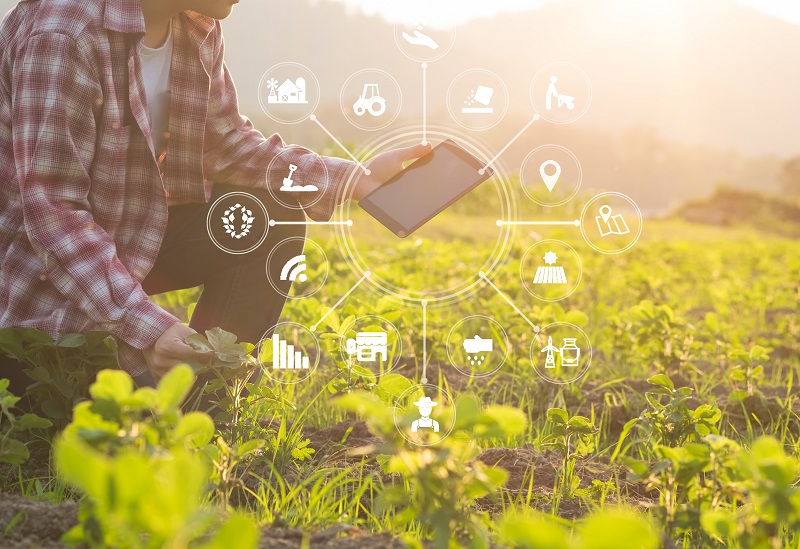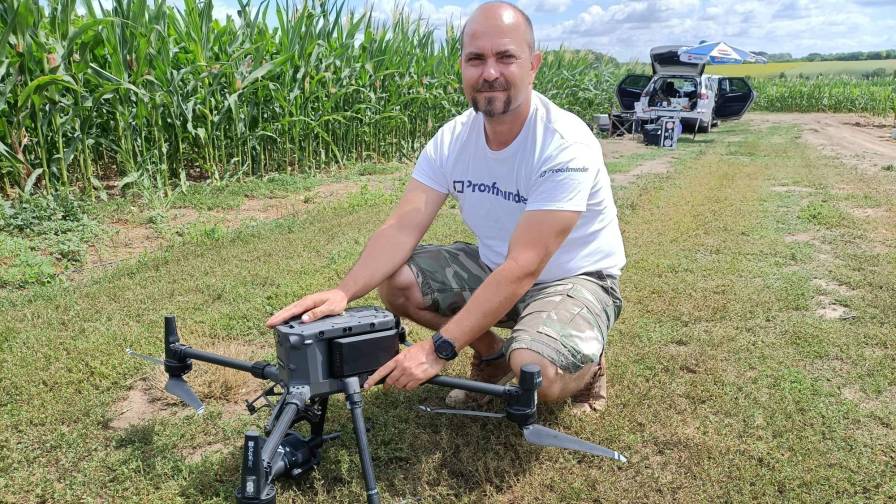How Blockchain Would Work in the Grain Industry
If you believe the latest hype about technology, you’d think that blockchain technology (BCT) is going to transform every business by next Wednesday. Of course, that’s not the case, but the agrifood system seems custom-designed for the technology. More and more food products are branded and accompanied by a variety of certification schemes. For instance, organic production is concerned with verifying sustainable practices. Without verifiable and data rich assets, unqualified counterfeit products with high-quality claims, move across supply chains. Envision an agrifood system, with all of its legacy technologies, but operating as a common database, a backbone, that all participants in an industry (or a supply chain) can access, read and write to. BCT seems to be a logical choice for verifying practices with verified data.
A blockchain is a type of distributed ledger technology (DLT), meaning it is a data ledger that is shared by multiple entities operating on a distributed network. Its value proposition is that it improves efficiency by coordinating people, organizations, and institutions. For instance, it minimizes the supply chain’s cost of verifying the three T’s: trust, transparency, and traceability. Trust refers to a system that ensures consistency of information on labels and advertisements. Transparency refers to whether the product claims are valid, such as, diet (e.g., low fat) fairness to animals (e.g., cage free, grass fed), and purity, good for the environment (e.g., non-gmo). Traceability suggests tracking products end-to-end in the agrifood chain (e.g., where the product was sourced, when products change possession, are repackaged).
Blockchain’s architecture is not a single technology. It is a part of a larger digital architecture that ensures the information verified truly represents the state of the physical commodity. Verification requires a distributed ledger, proof of work, digital signatures, and a consensus algorithm. The data sent to the blockchain comes from the traditional agricultural applications from farm data, such as Big Data, Global Navigation Satellite System, and Artificial Intelligence algorithms for analysis and IoT (Internet of Things), which describes the connection of any devices to the internet using software and sensors to communicate, collect, and exchange data. Much of this farm data will be cleaned with publicly available tools (e.g., USDA ARS Yield Editor for yield monitor). For food processors, the information sent to the blockchain come from legacy ERP (Enterprise Resource Planning) systems.
One of the most significant obstacles for BCT applied to agricultural commodities is that some farm production is amalgamated and mixed at the storage and shipping stages. In the following representation, a blockchain operation is conceptualized between farmer, elevator, and the miller.
MORE BY KEITH HARRIS
The process first starts at the time of harvest. Farmers store in the blockchain details about the harvest by certifying that the process from seeding (or earlier) to harvesting is compliant with certain regulations (e.g., organic, non-gmo), which consequently needs a certification authority, and frequently site-specific yield estimates (e.g., USDA’s Yield Editor for data quality assurance) to confirm this is the case. This certification authority issues signing authority of a certificate analysis to the farm, enabling the farm to certify specific identified portions of the crop (lots). The lots are identified using a unique identification number (e.g., a barcode). After certifying these lots, they are shipped to a grain elevator. The farmer’s delivery would move across the weighbridge and testing the quality of the grain at the sample station. At the moment of taring off at the weighbridge, the settlement is recorded onto the blockchain. The farmer’s identity is stored on the blockchain, and the farmer transfers the ownership to the elevator.
A settlement of the transaction depends on a network of computers that usually provide the computing power to solve an intensely complex algorithm to achieve consensus by ‘mining’, which is called ‘proof of work’. All grains received at the elevator pass through quality control process, which allows the segregation of grains by levels of quality so that prices are set according to the characteristics. When grain is received and processed by purchase order, a batch number is assigned to the grain. This could include an identity preserved certification, the producer’s identity or growth location number. All of these characteristics can be written to the blockchain as the origin information.
When grain is shipped to the elevator, a transaction between the manufacturer and elevator will occur. First the elevator checks ownership of the product via the blockchain platform to ensure what he received is not counterfeited. Then the message indicating the product was checked and received will be sent to the blockchain and the ownership is transferred from the elevator to the manufacturer. The transaction information is broadcasted to every node in blockchain for further blockchain mining.
When the grain is shipped to the miller, a transaction between the elevator and miller will occur. First an elevator checks the product’s ownership via blockchain platform to ensure what was received meets the quality claims of the sold product. Then a message will be sent to the blockchain indicating the product is checked and received, and ownership is transferred from elevator to the miller.
The next step is processing or packaging. To convert the commodity to a value-added product, a production order is used to turn a bulk order into a packaged finished item. It could be a pallet of 25-pound bags. The milled grain gets another batch number, which provides an opportunity to record additional attribute information. The condition, temperature, nutritional, packaging supplier information (traceability), or anything pertinent to the grain written can be written to the block chain as quality control information. Other downstream stakeholders (e.g., banks, transporters, customers, etc.) are able to do the verify and check the provenance chain.
BCT can provide a version of truth so trade can be trusted, traceable, and transparent within the agrifood system. Alone it does not solve the farm data challenges. It can, however, be a powerful prompt for new ways of working, enabling greater accountability that provides consensus, which gives bankers, growers, and traders single truth view of the commodity valued at real time.
A more in-depth article on this topic can be found on our Kansas State University AgManager website.









